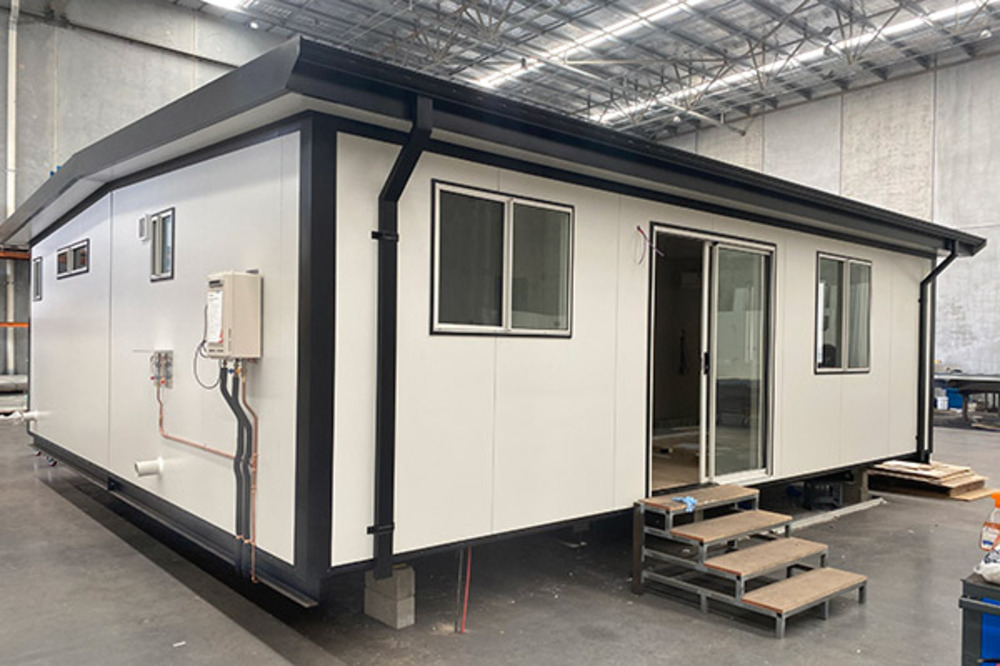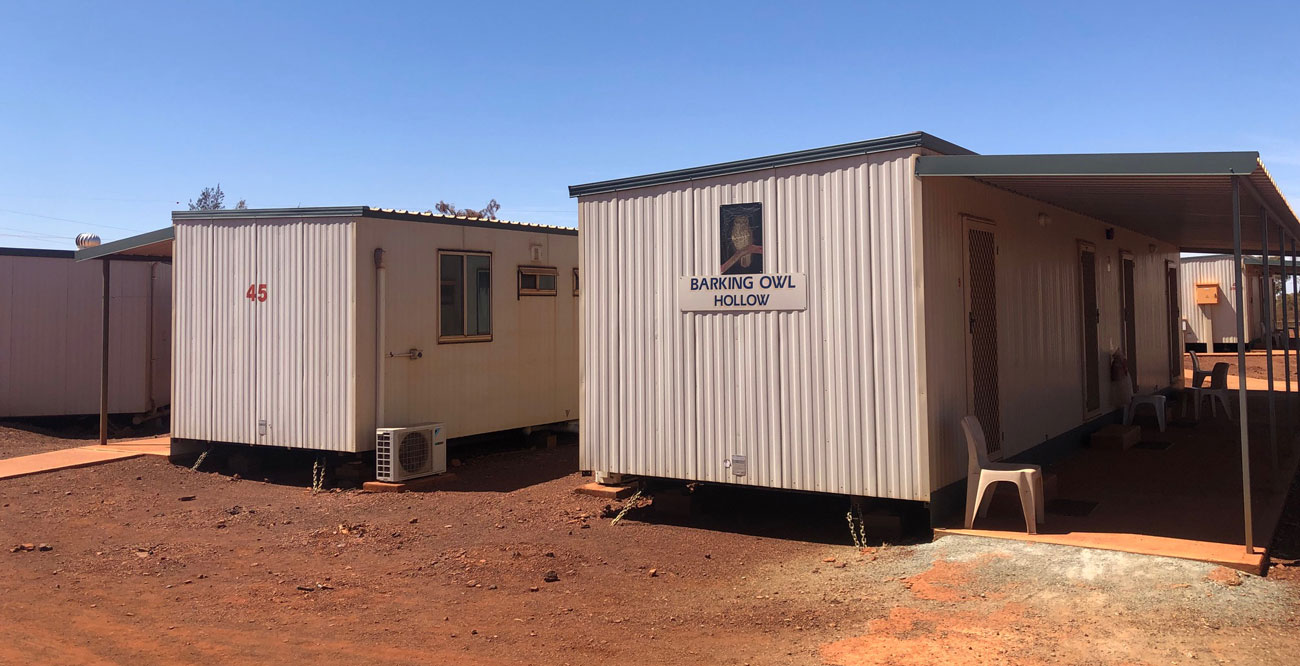For any construction project, you are required to obtain permits. This includes building modular, prefabricated, or otherwise transportable buildings. The exception to this is if the structure is the size of a small shed and is not intended to be used as a dwelling.
Do You Need Council Approval for a Portable Building in Australia?
As transportable buildings become more popular, many people are unsure about satisfying permit requirements. A transportable building in Australia will require some degree of council approval, especially if it is over 20 square meters, includes electrical work, or has plumbing.
Additionally, your approval for a transportable building may require Section 68 Activity Approval and a Development Application from the local council. Other requirements may vary based on local regulations.
Remember that these parameters aim to ensure that transportable buildings are stable and safe even though they are not permanent structures. Numerous factors that govern transportables include,
- Building permits
- Structural compliance certificates
- Foundation and load requirement assessments
- Fire safety compliance
What Constitutes a Portable Building?
Australia generally defines a portable building as a prefabricated structure and easy to move or relocate. These buildings are considered temporary structures regulated by the Temporary Structures Standard of the Australian Building Codes Board (ABCB).
Types of Portable Buildings
There are several types of portable buildings, including,
- Granny Flats: These are small units, usually in the backyard. They are frequently used as rental properties or homes for elderly family members.
- Temporary Offices: Bringing fast and affordable space, the temporary offices are ideal for use in mining sites or expanding businesses.
- Classrooms: Using transportables to lessen school overcrowding is a great way to improve the environment and comfort of staff and students.
- Storage Units: Transportable storage units are helpful in commercial and residential applications and are an ideal way to get organised.
Local Council Regulations and Permits
The regulations you must meet and the statutes you must adhere to will vary based on the local rules. Every state and municipality in Australia has its requirements. For this reason, be sure to contact your local council and do not take for granted that what you found to be true in Stirling is the same in Freemantle.
While this may seem confusing, different cities and towns do not always have the same inherent risks or considerations. So, safety requirements or building demands that are extremely helpful in one part of the state may not be applicable in another area. Some examples of this include:
- Is the property in a bushfire zone
- Is the property on a flood plane
- How many dwellings are on the block
- Does the land have aboriginal heritage considerations
Other permits and considerations administered by your local government include:
- Building Development Approval (BDA) from your local council if you will use the structure as a residence
- A permit under the Environmental Planning and Assessment Act 1979 which is necessary if it falls under the provisions of a Special Environmental Planning Policy (SEPP) for manufactured homes
- Getting a Complying Development Certificate (CDC) from a private certifier or a Development Approval (DA) from your local council
- Environmental Planning and Assessment (EP&A) Act 1979 allows you to build a moveable or manufactured house
- Local Government Act 1993 permitting the installation of a manufactured or transportable home
- A permit from Section 8 of the Local Government Act
One of the best ways to ensure your portable or demountable building tick all the requirements for permits and codes is to work with a builder who has years of experience arranging permits and satisfying local regulations.
When is council approval required?
You will likely need council approval if your transportable building will be used for commercial or residential purposes. However, temporary, transportable buildings have more relaxed requirements.
Portable Building Council Approval in Western Australia
The size and height of portable buildings significantly impact the need for approval. Those that are less than 10 square meters in floor area and less than 2.4 meters high do not require council approval. However, where you place the structure matters. For example,
- The portable building cannot block vehicle sightlines.
- It must be constructed behind your property’s front setback line.
- Constructing a transportable building in a conservation precinct is forbidden.
Summary of the WA-Specific Laws and Requirements
- The transportable must be able to withstand wind
- Stormwater shall be directed to appropriate drainage systems
- The floor cannot be more than 500mm above the natural level of ground.
Types of WA Permits and Approvals Needed
| Permit/Approval Type | Description |
|---|---|
| Development Approval | To assess the transportable building’s impact on the community and environment. |
| Building Permit | Ensures the transportable complies with the Building Act 2011 and the Building Code of Australia. |
| Occupancy Permit | Confirms that the building is safe for use. |
| Certificate of Design Compliance | Verifies that the transportable building design meets relevant building standards. |
| Certificate of Construction Compliance | Confirms that building work has been completed per approved plans and specifications. |
Portable Building Council Approval in Victoria
Local councils in Victoria consider the size and use of transportable buildings, but generally, building permits are necessary for transportable structures in Victoria.
Remember that specific councils may have different requirements.
Summary of the VIC-Specific Laws and Requirements
- The Victorian Building Authority must issue occupancy permits to portable buildings larger than 100m2 other than those placed directly on the ground.
- A building permit is required in Victoria even if a planning permit is not necessary.
- In 2023, Victoria eased some restrictions on small second dwellings (including portable ones), simplifying adding these to your lot.
Types of VIC Permits and Approvals Needed
| Permit/Approval Type | Description |
|---|---|
| Planning Permit | If the transportable will affect the use of the land or if it is located in a zone requiring planning permission. |
| Building Permit | Ensures compliance with the Building Act 1993 and the Building Regulations 2018. |
| Occupancy Permit | To ensure the structure is safe. |
Portable Building Council Approval in New South Wales
Size and use play a significant role in determining council approval. Transportable buildings over 20 square meters in size that include plumbing and electrical services will require approval.
Summary of the NSW-Specific Laws and Requirements
- Section 68 Approval- According to the Local Government Act, this approval is necessary for relocatable homes. It confirms the transportable is compliant with local requirements.
- Recent NSW legislation has relaxed the need for council approval on certain building transportables. In some cases, structures on rural land and transportables 80 square meters or less placed near a main house will not need approval.
Types of NSW Permits and Approvals Needed
| Permit/Approval Type | Description |
|---|---|
| Development Application | Looks at the impact of your transportable structures on the surrounding area. |
| Building Approval | Ensures all relevant local codes are met. Additionally, the Building Code of Australia must be met. |
Portable Building Council Approval in Queensland
The general regulations for the approval of a transportable building in Queensland are in place to ensure the safety and integrity of the structures. The council will need specifics regarding the transportable building to determine approval. The information includes,
- Size of the transportable
- How you will use it
- The structure’s location on the property
- Duration of placement
Summary of the QLD-Specific Laws and Requirements
Several QLD codes govern the placement of transportable structures.
- The Building Act of 1975- Gives the legal outline for construction work in QDL and works in conjunction with the National Construction Code.
- Building Regulation 2021- This works to support the Building Act of 1975 and mentions explicitly transportable buildings.
- Queensland Development Code (QDC) MP 3.3- This code outlines requirements for temporary accommodation buildings. It includes requirements for
- Structural wind loading
- Noise, dust, and pest mitigation
- Energy and water efficiency
- Fire safety
- Amenity standards
Types of QLD Permits and Approvals Needed
| Permit/Approval Type | Description |
|---|---|
| Development Approval | Necessary for nearly all new developments, including clearing vegetation, plumbing work, building work, and more. |
| Building Approval | Ensures the transportable is safe and compliant with all applicable codes. |
| Plumbing and Drainage Approval | This is separate from the other permits and applies if your portable structures have toilets, sinks, and showers. |
Steps to Obtain Council Approval
Getting the council’s approval for your transportable building is not negotiable. While the steps to gaining approval may vary, here is a general overview of what may be expected before erecting a transportable building.
- Reach out to your local council. They are not the enemy; finding all the requirements right away can help your efforts as you go through the process.
- Gather applicable plans to show the council. Typically, these plans include building dimensions, materials, intended use, and an environmental assessment.
- Work with professionals to ensure your results are compliant with ordinances.
- Lodge your application along with the required fees and requested paperwork.
- Pass inspection before you begin building.
Factors that Influence the Approval Process
There are a number of factors that will affect the council’s decision regarding permits. These include,
- Compliance with Building Codes– Your transportable building must comply with the Building Code of Australia and relevant Australian Standards.
- Site Suitability– The location must adhere to setback regulations and have access to utilities. Additionally, the soil must be suitable, and the environmental impact should be low.
- Design– The design of your transportable building fits in with the local character and aesthetics.
- Use– Your planned use of the transportable building will affect the approval process.
- Size and Facilities– When a building is above a specific size or has bathrooms and kitchens, it is usually held to higher approval standards.
Conclusion
Transportable buildings are suitable for a great many uses, including commercial, residential, and educational use. With such versatility, it is vital to understand and follow various building protocols.
Here at Aussie Demountables, we understand the importance of creating top-quality demountables that adhere to the local council’s requirements. If you need a transportable building in the future, feel free to contact us. With decades in the industry, we know what to do so your portable buildings comply with regulations and exceed your expectations.


